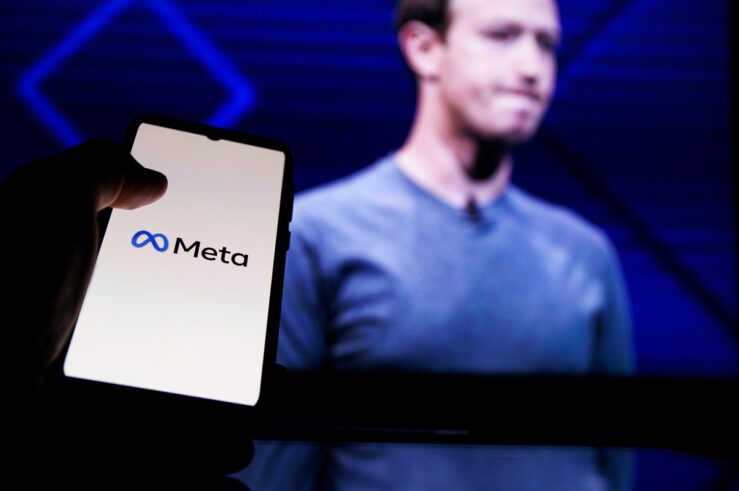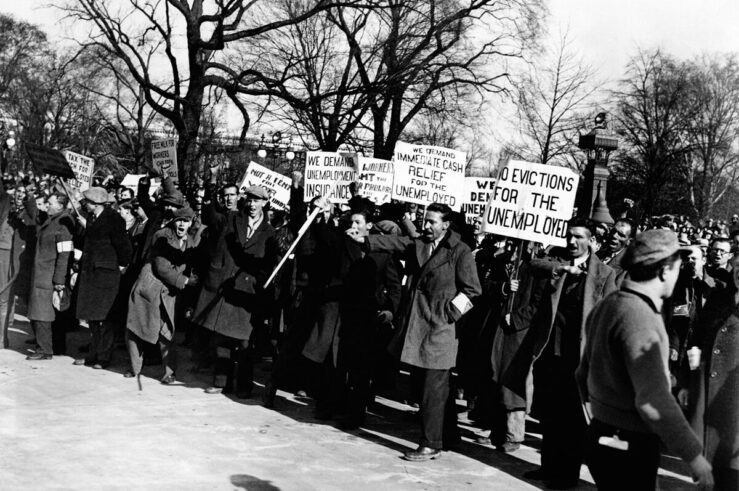
This article is a part of the Antitrust's Uncertain Future: Competition in the New Regulatory Landscape symposium.

If S.2992—the American Innovation and Choice Online Act or AICOA—were to become law, it would be, at the very least, an incomplete law. By design—and not for good reason, but for political expediency—AICOA is riddled with intentional uncertainty. In theory, the law’s glaring definitional deficiencies are meant to be rectified by “expert” agencies (i.e., the DOJ and FTC) after passage. But in actuality, no such certainty would ever emerge, and the law would stand as a testament to the crass political machinations and absence of rigor that undergird it. Among many other troubling outcomes, this is what the future under AICOA would hold.
Guidelines Cannot Substitute for the Law’s Lack of Legal Certainty
Two months ago, the American Bar Association’s (ABA) Antitrust Section published a searing critique of AICOA in which it denounced the bill for being poorly written, vague, and departing from established antitrust-law principles. As Lazar Radic and I discussed in a previous post, what made the ABA’s letter to Congress so eye-opening was that it was penned by a typically staid group with a reputation for independence, professionalism, and ideational heterogeneity.
One of the main issues the ABA flagged in its letter is that the introduction of vague new concepts—like “materially harm competition,” which does not exist anywhere in current antitrust law—into the antitrust mainstream will risk substantial legal uncertainty and produce swathes of unintended consequences.
According to some, however, the bill’s inherent uncertainty is a feature, not a bug. It leaves enough space for specialist agencies to define the precise meaning of key terms without unduly narrowing the scope of the bill ex ante.
In particular, supporters of the bill have pointed to the prospect of agency guidelines under the law to rescue it from the starkest of the fundamental issues identified by the ABA. Section 4 of AICOA requires the DOJ and FTC to issue “agency enforcement guidelines” no later than 270 days after the date of enactment:
outlining policies and practices relating to conduct that may materially harm competition under section 3(a), agency interpretations of the affirmative defenses under section 3(b), and policies for determining the appropriate amount of a civil penalty to be sought under section 3(c).
In pointing to the prospect of guidelines, however, supporters are inadvertently admitting defeat—and proving the ABA’s point: AICOA is not ready for prime time.
This thinking is misguided for at least three reasons:
Guidelines are not rules
As section 4(d) of AICOA recognizes, guidelines are emphatically nonbinding:
The joint guidelines issued under this section do not … operate to bind the Commission, Department of Justice, or any person, State, or locality to the approach recommended in the guidelines.
As such, the value of guidelines in dispelling legal uncertainty is modest, at best.
This is even more so in today’s highly politicized atmosphere, where guidelines can be withdrawn at the tip of the ballot (we’ve just seen the FTC rescind the Vertical Merger Guidelines it put in place less than a year ago). Given how politicized the issuing agencies themselves have become, it’s a virtual certainty that the guidelines produced in response to AICOA would be steeped in partisan politics and immediately changed with a change in administration, thus providing no more lasting legal certainty than speculation by a member of Congress.
Guidelines are not the appropriate tool to define novel concepts
Regardless of this political reality, however, the mixture of vagueness and novelty inherent in the key concepts that underpin the infringements and affirmative defenses under AICOA—such as “fairness,” “preferencing,” “materiality”, or the “intrinsic” value of a product—undermine the usefulness (and legitimacy) of guidelines.
Indeed, while laws are sometimes purposefully vague—operating as standards rather than prescriptive rules—to allow for more flexibility, the concepts introduced by AICOA don’t even offer any cognizable standards suitable for fine-tuning.
The operative terms of AICOA don’t have definitive meanings under antitrust law, either because they are wholly foreign to accepted antitrust law (as in the case of “self-preferencing”) or because the courts have never agreed on an accepted definition (as in the case of “fairness”). Nor are they technical standards, which are better left to specialized agencies rather than to legislators to define, such as in the case of, e.g., pollution (by contrast: what is the technical standard for “fairness”?).
Indeed, as Elyse Dorsey has noted, the only certainty that would emerge from this state of affairs is the certainty of pervasive rent-seeking by non-altruistic players seeking to define the rules in their favor.
As we’ve pointed out elsewhere, the purpose of guidelines is to reflect the state of the art in a certain area of antitrust law and not to push the accepted scope of knowledge and practice in a new direction. This not only overreaches the FTC’s and DOJ’s powers, but also risks galvanizing opposition from the courts, thereby undermining the utility of adopting guidelines in the first place.
Guidelines can’t fix a fundamentally flawed law
Expecting guidelines to provide sensible, administrable content for the bill sets the bar overly high for guidelines, and unduly low for AICOA.
The alleged harms at the heart of AICOA are foreign to antitrust law, and even to the economic underpinnings of competition policy more broadly. Indeed, as Sean Sullivan has pointed out, the law doesn’t even purport to define “harms,” but only serves to make specific conduct illegal:
Even if the conduct has no effect, it’s made illegal, unless an affirmative defense is raised. And the affirmative defense requires that it doesn’t ‘harm competition.’ But ‘harm competition’ is undefined…. You have to prove that harm doesn’t result, but it’s not really ever made clear what the harm is in the first place.”
“Self-preferencing” is not a competitive defect, and simply declaring it to be so does not make it one. As I’ve noted elsewhere:
The notion that platform entry into competition with edge providers is harmful to innovation is entirely speculative. Moreover, it is flatly contrary to a range of studies showing that the opposite is likely true…. The theory of vertical discrimination harm is at odds not only with this platform-specific empirical evidence, it is also contrary to the long-standing evidence on the welfare effects of vertical restraints more broadly …
… [M]andating openness is not without costs, most importantly in terms of the effective operation of the platform and its own incentives for innovation.
Asking agencies with an expertise in competition policy to enact economically sensible guidelines to direct enforcement against such conduct is a fool’s errand. It is a recipe for purely political legislation adopted by competition agencies that does nothing to further their competition missions.
AICOA’s Catch-22 Is Its Own Doing, and Will Be Its Downfall
AICOA’s Catch-22 is that, by making the law so vague that it needs enforcement guidelines to flesh it out, AICOA renders both itself and those same guidelines irrelevant and misses the point of both legal instruments.
Ultimately, guidelines cannot resolve the fundamental rule-of-law issues raised by the bill and highlighted by the ABA in its letter. To the contrary, they confirm the ABA’s concerns that AICOA is a poorly written and indeterminate bill. Further, the contentious elements of the bill that need clarification are inherently legislative ones that—paradoxically—shouldn’t be left to competition-agency guidelines to elucidate.
The upshot is that any future under AICOA will be one marked by endless uncertainty and the extreme politicization of both competition policy and the agencies that enforce it.




